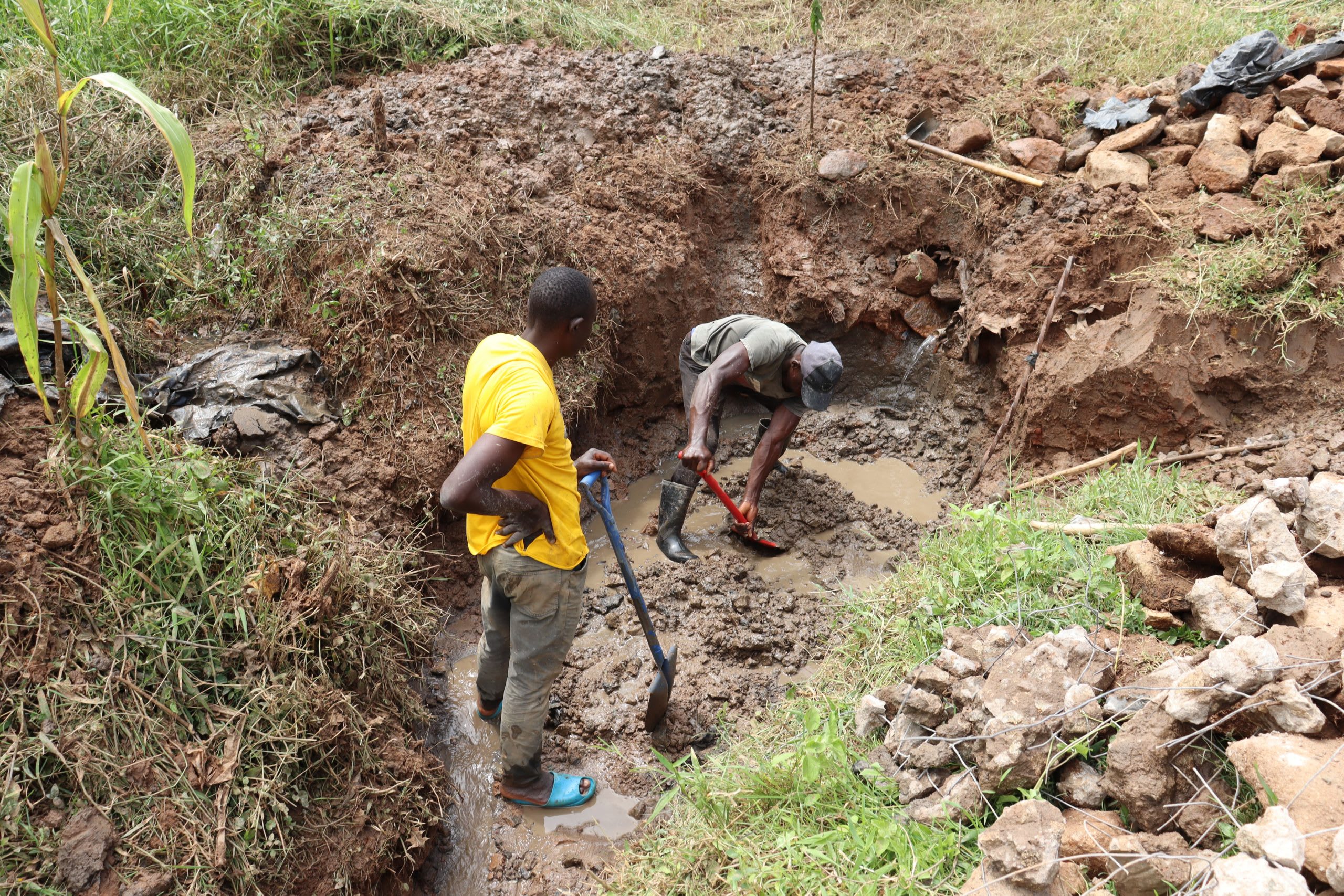The 308 people of the Jepkoyai Community rely on the unprotected Janet Iravoga Spring as their primary water source. Because it is not functioning properly, people wait in long lines, wasting valuable time trying to collect water.

Field Officer Gladys Chepkorir described the current condition of the waterpoint. "The waterpoint area is dirty, bushy. Stagnant water [is] present in the collection area. The water is clear, though [it] has [an] unpleasant smell. The staircase has worn out and become slippery."
However, the spring's poor physical condition is not the only problem - the water quality is questionable and, in the long run, likely makes community members ill.

Moses collecting water.
Thirteen-year-old Moses has suffered water-related illnesses after consuming the water. "The condition of the spring is not good, especially when you see some brown matter within the spring."
"I had severe diarrhea, which made me stay at home for quite some time since I could not manage to go to school then. They took me to the hospital where [a] proper diagnosis was done, and [I] was given drugs to get better," Moses continued.
Community members try to boil the water to make it safer for drinking, but buying firewood is expensive and consumes their already limited resources.
Moses grew up knowing that collecting water was one of his responsibilities, so he tried to make the best of the situation.

Moses walks home with water with some other children.
"We fetch water at our home in shifts, and when it is my turn, I try not to delay fetching it on time. Mostly [in the] evening, to allow [me to] prepare for school the following day," said Moses.
Moses does dream about the future. When asked about his hopes, he said, "My plan is to excel in my studies and be a better person in society." If Moses regained some of his valuable time that is wasted collecting water, he says, "I would read thoroughly, help my younger siblings do their homework, and help my parents with home chores."
Steps Toward a Solution
Our technical experts worked with the local community to identify the most effective solution to their water crisis. They decided to safeguard the existing flowing spring.
Spring Protection
Springs are natural water sources that originate from deep underground. As water travels through various layers of the earth, it undergoes a natural filtration process, making it cleaner and safer to drink. To protect these spring sources from contamination, we construct a waterproof cement structure around layers of clay, stone, and soil. This design channels the spring water through a discharge pipe, facilitating easier, faster, and cleaner water collection.
Chlorine Dispenser
As an extra measure towards water quality safety, uniquely engineered chlorine dispensers are installed at all of our spring protection projects so community members can treat their water with pre-measured doses of chlorine. The chlorine treats any residual contamination and stays active for two to three days, ensuring water stays safe to use even when stored at home. Chlorine delivery and maintenance of the dispensers are part of our ongoing community support.
Community Education & Ownership
Hygiene and sanitation training are integral to our water projects. Training is tailored to each community's specific needs and includes key topics such as proper water handling, improved hygiene practices, disease transmission prevention, and care of the new water point. Safe water and improved hygiene habits foster a healthier future for everyone in the community. Encouraged and supported by the guidance of our team, a water user committee representative of the community's diverse members assumes responsibility for maintaining the water point, often gathering fees to ensure its upkeep.

 Protected Spring
Protected Spring
 Rehabilitation Project
Rehabilitation Project

















